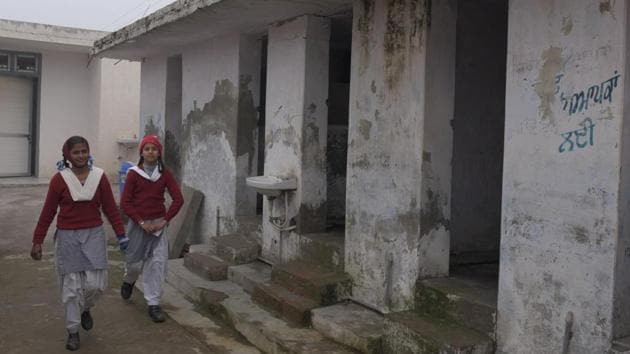India’s menstrual health: End the crisis of shame
There are five areas that need attention to take up ‘safe-periods’ as a public health issue. We must look into them
Madhu (13) lives in a remote village in Northern India, and belongs to a low-income household with no toilet, and limited access to water. When she got her first period, Madhu’s mother gave her a piece of rag to manage her menses. She told Madhu, in whispers, that she was unclean, and what norms she should follow to avoid polluting the kitchen and puja (prayer) space. Following her mother’s well-meant advice, Manju began the process of endangering her health for five days, every month. She started accepting a natural body cycle as a matter of shame.

There are millions of girls like Madhu, especially across rural India. According to the National Family Health Survey 4 (NFHS-4), sanitary napkin usage in rural India is only 48.2%. In the absence of sanitary methods, women take recourse to dirty rags, ash, newspapers, and hay when they menstruate.
The health and social implications of poor menstrual hygiene are not widely appreciated. Reproductive tract infections are 70% more common among women who use unhygienic materials to manage their menses. These infections can also be passed on from pregnant woman to unborn child. Cervical cancer incidence in India is almost twice the global average and is associated with inadequate menstrual hygiene. The drop-out rate of girls in school is 23% when they start menstruating, and absenteeism is over 20% of the school year. (all data, ‘Spot On!’ report --Dasra, et al).
There are five areas that need attention to take up ‘safe-periods’ as a public health issue.
The first is to create awareness. Women’s self-help groups are widespread in many states, and often focus on savings. Health, including menstrual hygiene, needs to be part of their agenda. Menstrual health is supposed to be part of the rural school education programme — but it has to be taught to girls, and also to boys. Mothers-in-law must be counselled by the three government health workers who operate in every village.
Second, stigma must be tackled relentlessly. The cultural norm that menstruating women are in some way “unclean” and cannot enter places of worship, or kitchens must end. Until 1990, sanitary napkin advertisements were not allowed on TV — today’s media has a big role to play in fighting menstrual taboos. The movie Padman demonstrated the power of film to destigmatise the issue. TV shows like Veera incorporated the issue into their content. So far, no woman Bollywood star has championed the issue.
Third, there must be easy access to sanitary methods, and this is best done by involving the community. Locally produced napkins through women’s’ self-help groups was pioneered in Tamil Nadu. At Barefoot College, an NGO in Rajasthan, four women make enough high-quality sanitary napkins, to serve the entire village, at a cost of only ₹11 per piece. Quality alternatives to the sanitary napkin are also needed – UNICEF has promoted the use of local, sanitised cloth.
Fourth, availability of water, sanitation and hygiene and disposal facilities are essential. Making sanitary napkins available is not adequate. Toilets are needed at home. The government’s Swachh Bharat scheme is a big step in this context. Tamil Nadu, in 2004, was the first state to address menstrual health management as part of its sanitation policies and programmes.
Fifth, school infrastructure must be made more comfortable for menstruating girls. Tamil Nadu provides separate toilets, incinerators and sanitary napkin vending machines for girls in school. Menstrual hygiene clubs increase awareness among students and teachers in government schools.
Sixth, governments must regard menstrual hygiene as much more than just a health issue. Himachal Pradesh has demonstrated how relevant and effective interdepartmental coordination can be in this context. Three government departments — health, education and rural development — have collaborated for the state-wide implementation of a menstrual hygiene programme.
The problems of menstrual health range from ignorance to infrastructure, sanitation to stigma — and more. Today, there is a much-needed national mission in nutrition. Swachh Bharat plays a pioneering mission role in sanitation. Surely, the time has come for India to also launch a national menstrual health management mission.
India’s women are enduring a crisis of menstrual health. Let’s put an end to this crisis of shame.
Ashok Alexander is founder-director of the Antara Foundation
The views expressed are personal



